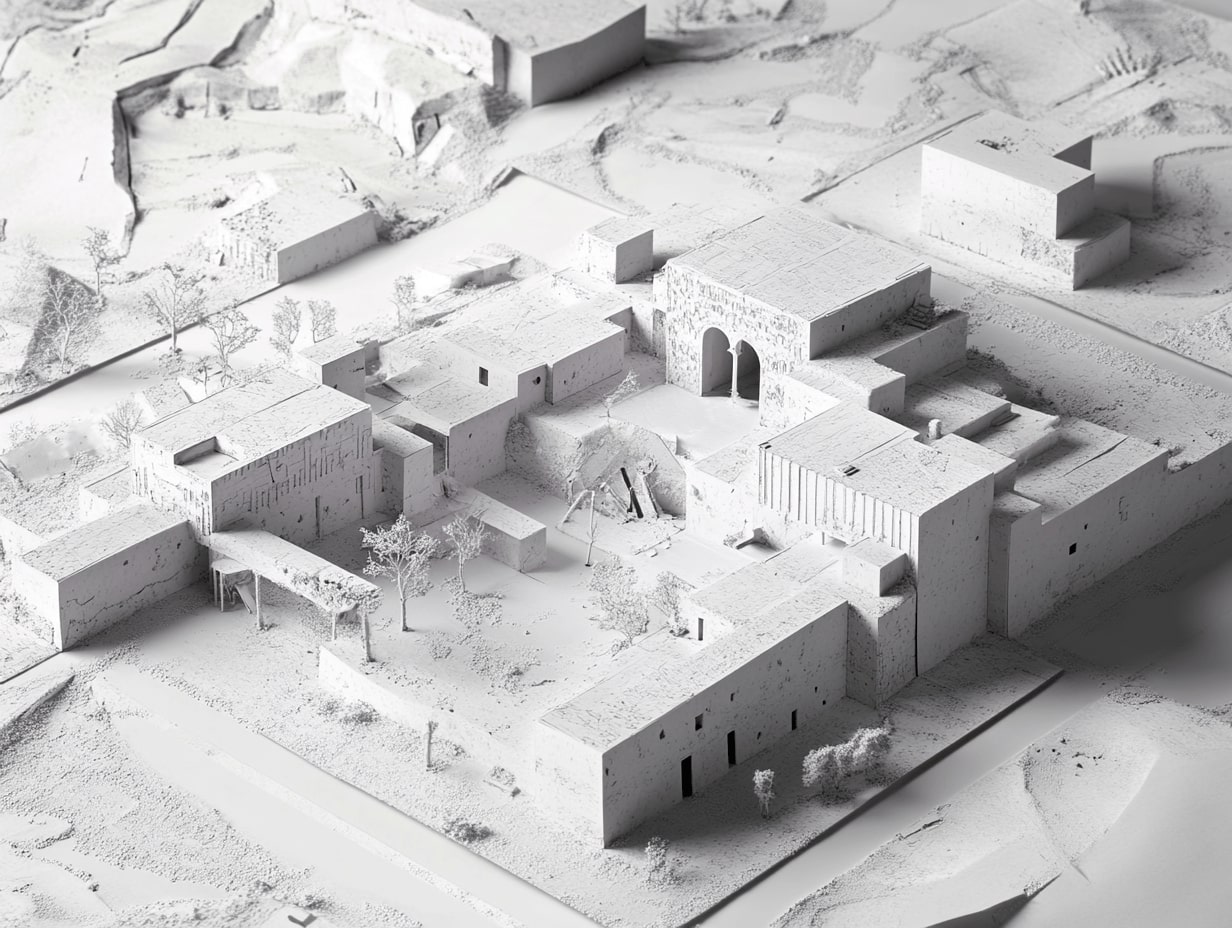- Home
- Articles
- Architectural Portfolio
- Architectral Presentation
- Inspirational Stories
- Architecture News
- Visualization
- BIM Industry
- Facade Design
- Parametric Design
- Career
- Landscape Architecture
- Construction
- Artificial Intelligence
- Sketching
- Design Softwares
- Diagrams
- Writing
- Architectural Tips
- Sustainability
- Courses
- Concept
- Technology
- History & Heritage
- Future of Architecture
- Guides & How-To
- Art & Culture
- Projects
- Interior Design
- Competitions
- Jobs
- Store
- Tools
- More
- Home
- Articles
- Architectural Portfolio
- Architectral Presentation
- Inspirational Stories
- Architecture News
- Visualization
- BIM Industry
- Facade Design
- Parametric Design
- Career
- Landscape Architecture
- Construction
- Artificial Intelligence
- Sketching
- Design Softwares
- Diagrams
- Writing
- Architectural Tips
- Sustainability
- Courses
- Concept
- Technology
- History & Heritage
- Future of Architecture
- Guides & How-To
- Art & Culture
- Projects
- Interior Design
- Competitions
- Jobs
- Store
- Tools
- More
Understanding Architectural Structural Diagrams: Evolution and Impact

In the world of construction and design, the blueprint of a building’s strength lies in its architectural structural diagram. These diagrams are the backbone of any construction project, guiding engineers and architects through the complex dance of physics and aesthetics that bring buildings to life. From the towering skyscrapers that define our city skylines to the homes that cradle our families, every structure begins with this crucial plan.
Understanding an architectural structural diagram is essential for anyone involved in the building process. These diagrams detail the skeleton of a structure, showing how various elements like beams, columns, and walls interact to support the building. They take into account the myriad forces a building must withstand, from the weight of its own materials to environmental challenges like wind and seismic activity. It’s a fascinating intersection of art and science, where every line and symbol on the page translates to the physical components that ensure a building’s durability and safety.
Our journey through the world of architectural structural diagrams reveals the meticulous planning and calculation that underpin our built environment – the kind of work that often relies on tools like a moment of inertia calculator. It’s a testament to human ingenuity and the relentless pursuit of innovation, standing on the shoulders of historical marvels like the Eiffel Tower and the Brooklyn Bridge. Join us as we delve into the foundations of architecture, exploring how these diagrams shape the spaces we inhabit and the landmarks we admire.

Table of Contents
ToggleUnderstanding Architectural Structural Diagrams
The Basic Concept and Purpose
Architectural structural diagrams are visual tools that exemplify the backbone of construction projects. These diagrams encapsulate the essence of a building’s framework by displaying the interaction and alignment of various structural elements such as beams, columns, walls, and foundations. Their primary purpose is to ensure that every part of the building can withstand environmental pressures while maintaining structural integrity and safety.
Architectural structural diagrams serve several key functions in the construction and design industry. Firstly, they provide a clear and comprehensive overview of a building’s structure, allowing engineers and architects to analyze and adjust the design as necessary. By documenting the spatial relationship between different components, these diagrams facilitate informed decision-making regarding materials, dimensions, and construction techniques.
Moreover, these diagrams act as a communication bridge among all stakeholders involved in the construction project, including designers, engineers, contractors, and clients. They help in setting clear expectations, enabling a unified understanding of the project’s structural requirements. This, in turn, streamlines the construction process, reduces the risk of errors, and ensures that the project adheres to the highest quality standards.
In addition to their practical applications, architectural structural diagrams also play a critical role in preserving the artistic vision of a building. They balance aesthetic appeal with technical precision, ensuring that the final structure is not only safe and functional but also visually appealing. This intersection of art and engineering is what gives iconic structures, such as the Eiffel Tower and the Brooklyn Bridge, their lasting legacy.
In essence, architectural structural diagrams are indispensable in the realm of construction and architecture. They embody the meticulous planning and calculation that goes into creating safe, durable, and aesthetically pleasing structures. Through these diagrams, we gain insight into the invisible forces that shape our built environment, ensuring that the spaces we inhabit and admire stand the test of time.
Key Components of Structural Diagrams
Understanding the key components of structural diagrams is imperative for both students and professionals in the architecture and engineering fields. These diagrams not only detail the physical aspects of a structure but also communicate the thought process and considerations behind a building’s design and integrity. Let’s delve into the crucial aspects that make up structural diagrams.

Load-Bearing Elements and Form
A foundational aspect of structural diagrams, load-bearing elements, includes beams, columns, walls, and footings. These components ensure the stability and safety of a building by supporting and distributing various loads, including gravity, wind, seismic, and live loads. The form, or shape, of these elements is equally important, as it directly influences the efficiency and overall aesthetic of a building. For instance, the innovative forms of historical marvels like the Eiffel Tower and the Brooklyn Bridge not only provide structural support but also contribute to their iconic status. In our designs, we meticulously plan the arrangement and scale of these elements to achieve a balance between functionality and visual appeal.
Material Specifications
Selecting the appropriate materials for the structural elements is crucial for ensuring durability, safety, and cost-effectiveness. Material specifications detail the type, quality, and strength of the materials used, ranging from various grades of concrete and types of steel reinforcement to finishes. These specifications are integral in meeting design requirements and conforming to building codes. For example, the choice of steel for the Brooklyn Bridge’s cables was pivotal in achieving the necessary tensile strength while maintaining the desired slim profile. In our projects, we thoroughly specify materials to ensure that every structure meets the desired standards of strength and aesthetics.
Connection Details
The details of how structural components are interconnected, or connection details, play a significant role in the integrity of a building. These details include information on welding, bolting, and the use of connectors to join beams to columns, walls to foundations, and so forth. Correct connection details are vital to ensure that the structure functions as a coherent system, capable of withstanding loads and stresses without failure. Drawing from historical examples, the precise connection methods employed in the construction of the Eiffel Tower were essential for distributing the tower’s weight and providing stability. In our work, we emphasize the importance of accurately detailing connection specifications in structural diagrams to guarantee both the safety and longevity of the structures we design.
By concentrating on these key components, we ensure that our structural diagrams not only serve as a blueprint for construction but also exemplify our commitment to creating structures that are both functional and aesthetically pleasing.
The Importance of Structural Diagrams in Architecture
From Concept to Construction
Structural diagrams play a pivotal role in the evolution of architectural design from its inception to the final construction phase. These diagrams provide a detailed representation of the structural elements of a building, including load paths, connections, and materials. By offering insight into the structural integrity of a design, they allow architects and engineers to assess the feasibility and ensure that the building can withstand various stresses and forces.
Moreover, structural diagrams are invaluable during the construction process. Contractors and construction teams rely on them to understand the specifications and details of the project. This ensures that the building is constructed accurately, adhering to the designed safety standards and aesthetic considerations. Furthermore, these diagrams help in identifying potential issues before construction begins, saving time and resources.
Structural diagrams are an important tool that helps architects, engineers, and contractors work together by creating a clear visual plan everyone can understand. This teamwork is especially important when dealing with complex load distributions or adding unique design features. Advanced graphing calculation tools have made these diagrams more accurate and easier to use. With these tools, professionals can map stress points, simulate how loads behave, and optimize materials to reduce waste.

Communication Among Professionals
One of the most crucial aspects of architectural projects is the seamless communication among different professionals involved, including architects, engineers, contractors, and clients. Structural diagrams serve as a common language, facilitating clear and precise communication about the design intentions and structural details of the project.
These diagrams simplify complex structural concepts, making them accessible to non-specialists. Consequently, they enhance the decision-making process, allowing stakeholders to make informed choices about materials, construction methods, and design adjustments.
Additionally, structural diagrams contribute to efficient teamwork by ensuring that all team members have a unified understanding of the project. This coordinated approach not only streamlines the workflow but also helps in maintaining the integrity of the original design, ensuring that the final construction mirrors the envisioned architectural masterpiece.
In essence, structural diagrams are indispensable tools in the architecture and construction industries. They bridge the gap from concept to construction, ensuring that structures are not only aesthetically pleasing but also strong, safe, and functional. Furthermore, they foster effective communication among professionals, laying the foundation for successful project completion.
Different Types of Architectural Structural Diagrams
Foundation and Floor Plans
When we create architectural structural diagrams, detailed foundation and floor plans become crucial. These diagrams illuminate the various aspects of a building’s foundation, showcasing the depth, size, and type of foundations such as strip footings, isolated footings, or mat foundations. Our primary goal here is to ensure that the building’s base distributes the structure’s load evenly to the ground beneath, providing a solid foundation for safety and stability. Moreover, floor plans give an overview of the layout, detailing the arrangement of spaces and the location of structural elements. These plans are indispensable for a comprehensive understanding of the structural composition of a building from the ground up.
Frame and Roof Diagrams
Moving upwards, frame and roof diagrams offer a blueprint for constructing the skeleton of a building. These drawings play a pivotal role in depicting the layout and design of the structural framework, including floor and roof framing. Floor framing diagrams detail the arrangement of beams, joists, and floor supports, ensuring that each level of the building is adequately supported. Roof framing diagrams, on the other hand, outline the structure that supports the roof coverings, emphasizing the beams, rafters, and trusses designed to withstand environmental loads. Together, frame and roof diagrams ensure that the structural integrity of a building is maintained, safeguarding against potential failures.

Elevations and Sections
Elevations and sections provide unique perspectives that complement the foundational and framing plans. Elevations are essential for understanding the exterior aesthetics of a building, depicting the façade features, window and door placements, and overall height. These diagrams allow stakeholders to visualize the building in its environment, aiding in the identification of potential design conflicts. Sections, however, cut through the structure, offering a view of the interior. These diagrams detail the relationships between different levels, room sizes, and the integration of structural elements with mechanical, electrical, and plumbing systems. Elevations and sections together supply a comprehensive view of the building’s appearance and internal workings, enhancing clarity and facilitating better communication among professionals involved in the construction process.
Our expertise in producing various architectural structural diagrams ensures that every aspect of a building’s design is meticulously planned and communicated. From the foundation to the roof, and everything in between, we provide detailed insights into the structural integrity and aesthetic considerations of a building, fostering successful project completion.
Creating an Architectural Structural Diagram
Creating an architectural structural diagram is a critical part of the design process, enabling us to visualize and communicate the structural elements of a building project effectively. These diagrams serve as blueprints that detail the engineering behind a building’s design, covering everything from the foundation to the roof. In this section, we delve into three essential aspects: identifying structural requirements, ensuring clarity and precision in the diagrams, and the tools and techniques beneficial for drafting these critical documents.
Identifying Structural Requirements
The first step in creating an architectural structural diagram is to identify the structural requirements of the building. This involves understanding the load-bearing capacities needed for the structure to remain safe and stable under various conditions. We examine elements like columns, beams, walls, and foundations, determining the types and quantities of materials required. Analyzing environmental factors such as wind, seismic activity, and soil conditions is crucial, as these will significantly impact the building’s structural design. By accurately identifying these requirements, we can ensure that the structure will withstand the tests of time and nature.
Considerations for Clarity and Precision
Once we’ve identified the structural requirements, our next focus is on ensuring that our diagrams are clear and precise. Clarity in an architectural structural diagram ensures that every stakeholder, from architects to builders, can understand the vision and technical necessities of the project. We achieve this by using standardized symbols and notations that communicate specific information unambiguously. Precision is equally important, as even minor inaccuracies can lead to significant issues during construction. We meticulously detail measurements, material strengths, and connection points to ensure that the structure can be built as designed, without room for error.

Tools and Techniques for Drafting
In drafting architectural structural diagrams, we rely on a combination of traditional and modern tools and techniques. Hand-drawn sketches often serve as the initial step, allowing for rapid visualization of ideas and structural concepts. However, digital tools and software like AutoCAD and Revit have become indispensable in our workflow. These programs support us in creating detailed, accurate diagrams capable of being shared and edited collaboratively. Digital drafting not only streamlines the design process but also enhances precision, with features that automatically calculate loads, dimensions, and materials. By leveraging these tools, we can create comprehensive, detailed architectural structural diagrams that are essential for successful project realizations.
By focusing on these pillars—identifying structural requirements, ensuring clarity and precision, and utilizing the right tools and techniques—we craft architectural structural diagrams that are both functional and aesthetically pleasing. These diagrams not only guide the construction process but also ensure the safety, stability, and longevity of the structures we design.
The Evolution of Structural Diagrams
The evolution of structural diagrams marks a significant advancement in how engineers and architects design buildings, influencing both the functionality and aesthetics of our built environment. As we delve into the history and progression, it’s important to understand the impact of evolving tools and methodologies on the creation and interpretation of these crucial design elements.
Historically, structural diagrams and architectural drawings were meticulously hand-drafted, a time-consuming process requiring high precision and skill. Traditional drawing laid the foundational skills necessary for architectural design, emphasizing the physical relationship between different structural elements. Architects and engineers used pencils, rulers, and compasses to translate complex structural concepts onto paper, ensuring every component was accurately represented for structural integrity and aesthetic appeal. This method, while effective, was inherently limited in its ability to easily share, modify, and replicate designs.
The introduction of digital modeling transformed this process entirely. Software tools like AutoCAD and Revit have revolutionized architectural design, enabling professionals to create detailed, three-dimensional structural diagrams far more efficiently than was possible with hand-drawing. Digital models facilitate a comprehensive view of a structure, allowing for immediate adjustments, enhanced collaboration among stakeholders, and a seamless integration of new data as a project evolves. This shift from traditional drawing to digital modeling has not only improved the accuracy and detail of structural diagrams but also significantly accelerated the design phase of construction projects.
- architectural diagram
- Architectural Diagram Concept
- Architectural Diagram Design
- Architectural Diagram Types
- Architectural Diagrams
- architectural diagrams guide
- Architectural Programmatic Diagrams
- Circulation Diagram
- How to Create Architectural Diagram
- Programmatic Diagrams
- Structural Diagram Design
- Structural Diagrams
Submit your architectural projects
Follow these steps for submission your project. Submission FormLatest Posts
Top 6 Software Architecture Diagram Secret Tricks Every CS Student Should Know in 2025-26
Read this article to learn simple and effective ways to create software...
Architecture Site Analysis Site Visit: A Guide to Better Design and Sustainability
Discover the importance of architecture site analysis and site visits in creating...
Unlocking Creativity: The Power of Architecture Bubble Diagrams in Design Process
Discover the vital role of bubble diagrams in architecture, enhancing clarity and...
Essential Tips for Evaluating Your Architectural Site Analysis for Successful Projects
Discover the key to successful architectural design with a thorough evaluation of...












Leave a comment